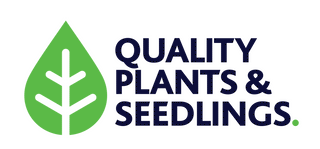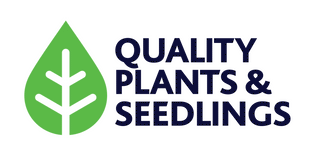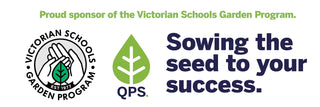Pollinators are essential for the growth and reproduction of many vegetables, fruits, and other plants. They help transfer pollen from the male to the female parts of flowers, leading to fertilization and seed production. Beneficial insects, on the other hand, help control pests and improve soil health, leading to healthier plants and higher yields. In this guide, we will discuss some of the common pollinators and beneficial insects found in Victoria, Australia.
Pollinators:
- Honeybees - Honeybees are perhaps the most well-known pollinators. They are social insects that live in colonies and are commonly used for commercial pollination of crops, including vegetables.
- Bumblebees - Bumblebees are also social bees, but they are larger than honeybees and have longer tongues. They are excellent pollinators of many vegetable crops, including tomatoes and peppers.
- Stingless bees - Stingless bees are native to Australia and are important pollinators of many native plants as well as some vegetable crops like zucchini and cucumbers.
- Solitary bees - Solitary bees are not social and do not live in colonies. They are important pollinators of many vegetable crops, including squash, melons, and pumpkins.
- Hoverflies - Hoverflies are also important pollinators, and their larvae are predators of aphids and other pests. They are attracted to flowers with flat, open faces like those of dill, parsley, and fennel.
- Butterflies - Butterflies are not as efficient as bees when it comes to pollination, but they still play a role in the process. They are attracted to flowers with bright colors and a sweet fragrance, like those of marigolds and sunflowers.
- Moths - Some moths are also important pollinators, particularly those that are active at night. They are attracted to flowers that are white or pale in color, like those of some squash and cucumber varieties.
- Carpenter bees - Carpenter bees are solitary bees that are important pollinators of many vegetable crops, including beans and peas.
- Bluebanded bees - Bluebanded bees are native to Australia and are important pollinators of tomatoes and eggplants.
- Leafcutter bees - Leafcutter bees are solitary bees that are important pollinators of many vegetable crops, including alfalfa and onions.
- Mason bees - Mason bees are solitary bees that are important pollinators of many vegetable crops, including blueberries and strawberries.
- Wasps - Some wasp species are important pollinators, particularly those that are attracted to sweet, fruity scents. They are attracted to flowers with large, flat, and open petals like those of sweet corn and pumpkins.
- Hummingbirds - Although not common in Victoria, hummingbirds are important pollinators in some areas of Australia. They are attracted to flowers with bright colors and a sweet fragrance, like those of salvias and lantanas.
- Fruit bats - Fruit bats are important pollinators of many native plants in Australia, as well as some fruit crops like bananas and mangoes.
- Beetles - Some beetle species are important pollinators, particularly those that are attracted to strong, musky scents. They are attracted to flowers with large, flat, and open petals like those of magnolias and water lilies.
- Native bees - There are over 1,500 species of native bees in Australia, many of which are important pollinators of native plants and some vegetable crops, including pumpkins and watermelons.Moth flies - Moth flies, also known as drain flies, are important pollinators of some native plants and some vegetable crops, including beans and peas.
- Flower beetles - Some flower beetle species are important pollinators, particularly those that are attracted to flowers with strong, fruity scents. They are attracted to flowers with large, flat, and open petals like those of magnolias and water lilies.
- Native bees - There are over 1,500 species of native bees in Australia, many of which are important pollinators of native plants and some vegetable crops, including pumpkins and watermelons.
- Moth flies - Moth flies, also known as drain flies, are important pollinators of some native plants and some vegetable crops, including beans and peas.
- Flower beetles - Some flower beetle species are important pollinators, particularly those that are attracted to flowers with strong, fruity scents. They are attracted to flowers with large, flat, and open petals like those of magnolias and water lilies.
Beneficial insects:
- Ladybugs - Ladybugs are predators of many pest insects, including aphids, mites, and whiteflies. They are attracted to plants with small, clustered flowers, like yarrow and dill.
- Lacewings - Lacewings are also predators of aphids and other pests. They are attracted to plants with small, nectar-rich flowers, like parsley and fennel.
- Parasitic wasps - Parasitic wasps lay their eggs inside pest insects, which then hatch and feed on the pest from the inside out. They are attracted to flowers with small, flat, and shallow nectaries, like those of carrot and parsley.
- Praying mantis - Praying mantises are predators of many pest insects and can be a useful addition to the garden. They are attracted to plants with large, showy flowers like marigolds and sunflowers.
- Ground beetles - Ground beetles are predators of many pest insects, including slugs, snails, and cutworms. They are attracted to plants with small, nectar-rich flowers, like sweet alyssum and clover.
- Tachinid flies - Tachinid flies lay their eggs on pest insects, which then hatch and feed on the pest from the inside out. They are attracted to flowers with small, flat, and shallow nectaries, like those of carrot and parsley.
- Predatory mites - Predatory mites feed on pest insects like spider mites and thrips. They are attracted to plants with small, clustered flowers, like yarrow and dill
- Soldier beetles - Soldier beetles are predators of many pest insects, including aphids and caterpillars. They are attracted to plants with small, clustered flowers, like yarrow and dill.
-
Ground-dwelling beetles - Some ground-dwelling beetles are predators of many pest insects, including slugs and snails. They are attracted to plants with small, nectar-rich flowers, like sweet alyssum and clover.
Assassin bugs - Assassin bugs are predators of many pest insects, including caterpillars and beetles. They are attracted to plants with small, flat, and shallow nectaries, like those of carrot and parsley. - Predatory nematodes - Predatory nematodes feed on pest insects like grubs and cutworms. They are attracted to plants with small, clustered flowers, like yarrow and dill.
- Spiders - Some spider species are predators of many pest insects, including aphids and whiteflies. They are attracted to plants with small, clustered flowers, like yarrow and dill.
- Praying mantis - Praying mantises are predators of many pest insects, including caterpillars and moths. They are attracted to plants with large, showy flowers like marigolds and sunflowers.
- Ants - Some ant species are predators of many pest insects, including aphids and caterpillars. They are attracted to plants with small, nectar-rich flowers, like parsley and fennel.
- Earwigs - Earwigs are predators of many pest insects, including aphids and mites. They are attracted to plants with small, clustered flowers, like yarrow and dill.
- Rove beetles - Rove beetles are predators of many pest insects, including slugs and snails. They are attracted to plants with small, nectar-rich flowers, like sweet alyssum and clover.
- Syrphid flies - Syrphid flies are important predators of aphids, and their larvae also feed on other pest insects like thrips and caterpillars. They are attracted to flowers with flat, open faces like those of dill, parsley, and fennel.
- Green lacewings - Green lacewings are also predators of aphids and other pest insects. They are attracted to plants with small, nectar-rich flowers, like parsley and fennel.
- Dragonflies - Dragonflies are important predators of mosquitoes and other flying insects. They are attracted to plants with large, showy flowers like marigolds and sunflowers.
- Tumblebugs - Tumblebugs, also known as dung beetles, are important for soil health as they help break down animal waste and other organic matter. They are attracted to plants with small, nectar-rich flowers, like sweet alyssum and clover.
- Minute pirate bugs - Minute pirate bugs are predators of many pest insects, including thrips and spider mites. They are attracted to flowers with small, flat, and shallow nectaries, like those of carrot and parsley.
- Aphid midges - Aphid midges are important predators of aphids. They are attracted to flowers with flat, open faces like those of dill, parsley, and fennel.
- Minute wasps - Minute wasps are parasitoids of many pest insects, including whiteflies and scale insects. They are attracted to flowers with small, flat, and shallow nectaries, like those of carrot and parsley.
- Predatory bugs - Predatory bugs, including assassin bugs and damsel bugs, are predators of many pest insects, including caterpillars and beetles. They are attracted to plants with small, flat, and shallow nectaries, like those of carrot and parsley.
- Spider wasps - Spider wasps are predators of many pest insects, including spiders and caterpillars. They are attracted to flowers with small, nectar-rich flowers, like sweet alyssum and clover.
- Parasitic nematodes - Parasitic nematodes feed on pest insects like grubs and cutworms. They are attracted to plants with small, clustered flowers, like yarrow and dill.
- Lace bugs - Lace bugs are predators of many pest insects, including aphids and mites. They are attracted to plants with small, nectar-rich flowers, like sweet alyssum and clover.
- Beet armyworm parasitoid wasps - Beet armyworm parasitoid wasps lay their eggs inside pest insects, which then hatch and feed on the pest from the inside out. They are attracted to flowers with small, flat, and shallow nectaries, like those of carrot and parsley.
- Mealybug destroyer - Mealybug destroyers are important predators of mealybugs, a common pest of many vegetable crops. They are attracted to plants with small, nectar-rich flowers, like sweet alyssum and clover.
- Braconid wasps - Braconid wasps are parasitoids of many pest insects, including caterpillars and aphids. They are attracted to flowers with small, flat, and shallow nectaries, like those of carrot and parsley.



